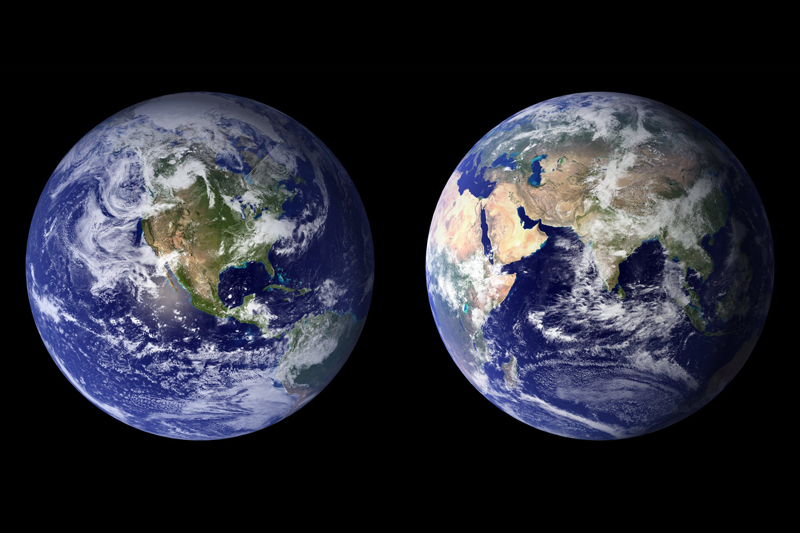Tropical Storm Noel Threatens Bahamas

The 14th named storm of the Atlantic hurricane season devastated much of the Caribbean earlier this week. Now forecasters are predicting that the tropical storm could turn into a hurricane and that it is headed towards Florida.
Though it hasn’t yet been categorized as a hurricane, Noel equals the deadliest Atlantic storm this year, Hurricane Felix, and will probably surpass it. The death toll currently stands at 101. Felix totaled that number of casualties in September when it hit the Caribbean, Nicaragua, and Honduras.
Last weekend, a tropical depression dropped heavy rains on Hispaniola, an island lying between Cuba and Puerto Rico. On October 28, the depression gathered itself to become strong and organized enough to be named Noel. Tropical storm warnings were issued to Haiti, Dominican Republic, and parts of Cuba. Then on Monday the storm moved closer to the Caribbean Islands of Turks and Caicos. For the next couple of days Noel hovered above and around Cuba.
Then on Wednesday, tropical storm warnings began to be issued for the coasts of Florida. Experts were concerned that if the storm continued on its northern path, it would make landfall around Miami. Fortunately on Thursday morning, it began a northeastern turn away from Florida but headed towards the Bahamas. The storm warnings have lifted from the Florida coast, but they will still experience heavy winds.
So far no deaths have been reported in the Bahamas, but nearly five inches of rain have been fallen on the capital city of Nassau. The island of Hispaniola, which is shared by the Dominican Republic and Haiti, incurred the largest death toll in the Caribbean. There have been reported 66 deaths in the Dominican Republic and 34 in Haiti. One death was reported in Jamaica.
Rescue efforts are ongoing in the hardest-hit areas. Many people are still stranded on Hispaniola and volunteers have joined the Dominican civil defense force to help residents unable to escape.
Dominican legislator Sergio Vargas told The Associated Press, “We’ll try to reach places where we don’t know what’s happened because we haven’t had access since Monday.” A state of emergency has been declared on the island.
The heavy rains alone have caused an estimated $30 million in damage. And rescuers are worried that as cleanup continues, the death toll will rise, especially around the capital, Port-au-Prince, where most of the deaths have occurred already.
Though it hasn’t yet been categorized as a hurricane, Noel equals the deadliest Atlantic storm this year, Hurricane Felix, and will probably surpass it. The death toll currently stands at 101. Felix totaled that number of casualties in September when it hit the Caribbean, Nicaragua, and Honduras.
Last weekend, a tropical depression dropped heavy rains on Hispaniola, an island lying between Cuba and Puerto Rico. On October 28, the depression gathered itself to become strong and organized enough to be named Noel. Tropical storm warnings were issued to Haiti, Dominican Republic, and parts of Cuba. Then on Monday the storm moved closer to the Caribbean Islands of Turks and Caicos. For the next couple of days Noel hovered above and around Cuba.
Then on Wednesday, tropical storm warnings began to be issued for the coasts of Florida. Experts were concerned that if the storm continued on its northern path, it would make landfall around Miami. Fortunately on Thursday morning, it began a northeastern turn away from Florida but headed towards the Bahamas. The storm warnings have lifted from the Florida coast, but they will still experience heavy winds.
So far no deaths have been reported in the Bahamas, but nearly five inches of rain have been fallen on the capital city of Nassau. The island of Hispaniola, which is shared by the Dominican Republic and Haiti, incurred the largest death toll in the Caribbean. There have been reported 66 deaths in the Dominican Republic and 34 in Haiti. One death was reported in Jamaica.
Rescue efforts are ongoing in the hardest-hit areas. Many people are still stranded on Hispaniola and volunteers have joined the Dominican civil defense force to help residents unable to escape.
Dominican legislator Sergio Vargas told The Associated Press, “We’ll try to reach places where we don’t know what’s happened because we haven’t had access since Monday.” A state of emergency has been declared on the island.
The heavy rains alone have caused an estimated $30 million in damage. And rescuers are worried that as cleanup continues, the death toll will rise, especially around the capital, Port-au-Prince, where most of the deaths have occurred already.

Related Articles
Editor's Picks Articles
Top Ten Articles
Previous Features
Site Map
Content copyright © 2023 by Nicole Collins. All rights reserved.
This content was written by Nicole Collins. If you wish to use this content in any manner, you need written permission. Contact Ije Yvonne for details.


